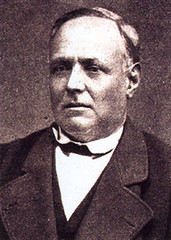There are two new writing contests I found that you may want to enter. Both are with reputable organizations, and unfortunately, I can enter neither of them. The first, because of my age, and the second because I do have a published book of fiction. However, I know several new writers consult this site for information, so I wanted to pass them on to you.
FICTION WRITING CONTESTS
The first contest is The First Annual Tennessee Williams/New Orleans Literary Festival Fiction Writing Contest. A must enter! Big prizes. You can read all about it here:
The second contest is the Narrative Magazine’s 30 Below Story Contest. (For writers under the age of 30. Yes, I’m a little beyond that.) You can find the guidelines here:
LYRICS AND CHORDS TO “WHITE SQUALL” by Stan Rogers
I was listening to a CD by Scottish performer Alex Beaton and immediately fell in love with the song. I’ve developed an interest lately in the Maritime provinces of Canada, its music and culture. The first paragraph are notes I’ve taken on words in the song. I found the notes here:
[The town of Wiarton is situated at the mouth of one of the deepest Great Lake ports. For years, over 30% of the Captains and First Mates employed in shipping on the Lakes came from this quiet fishing town in the Bruce Peninsula. There are very few families in the town, even now, who have not lost a close relative to the fury of the lakes. The Soo is Sault Ste. Marie Wireton is in Ontario ]
WHITE SQUALL
Now it’s just my luck to have the watch, with nothing left to do
But watch the deadly waters glide as we roll north to the ‘Soo’,
And wonder when they’ll turn again and pitch us to the rail
And whirl off one more youngster in the gale.
The kid was so damned eager. It was all so big and new.
You never had to tell him twice, or find him work to do.
And evenings on the mess deck he was always first to sing,
And show us pictures of the girl he’d wed in spring.
CHORUS
But I told that kid a hundred times “Don’t take the Lakes for granted.
They go from calm to a hundred knots so fast they seem enchanted.”
But tonight some red-eyed Wiarton girl lies staring at the wall,
And her lover’s gone into a white squall.
CHORUS
Now it’s a thing that us oldtimers know. In a sultry summer calm
There comes a blow from nowhere, and it goes off like a bomb.
And a fifteen thousand tonner can be thrown upon her beam
While the gale takes all before it with a scream.
The kid was on the hatches, lying staring at the sky.
>From where I stood I swear I could see tears fall from his eyes.
So I hadn’t the heart to tell him that he should be on a line,
Even on a night so warm and fine.
CHORUS
When it struck, he sat up with a start; I roared to him, “Get down!”
But for all that he could hear, I could as well not made a sound.
So, I clung there to the stanchions, and I felt my face go pale,
As he crawled hand over hand along the rail.
I could feel her keeling over with the fury of the blow.
I watched the rail go under then, so terrible and slow.
Then, like some great dog she shook herself and roared upright again.
Far overside. I heard him call my name.
CHORUS
So it’s just my luck to have the watch, with nothing left to do
But watch the deadly waters glide as we roll north to the ‘Soo’,
And wonder when they’ll turn again and pitch us to the rail
And whirl off one more youngster in the gale.
LAST CHORUS:
But I tell these kids a hundred times “Don’t take the Lakes for granted.
They go from calm to a hundred knots so fast they seem enchanted.”
But tonight some red-eyed Wiarton girl lies staring at the wall,
And her lover’s gone into a white squall.
CHORDS: The chords follow this progression. I capo on the third fret.
G, Em,C, Bm, Am7, D,
G, Em,C, Bm, Am7, D, G
CHORUS CHORDS: D,C, G, Em, Bm, Am7, D
G, Em,C, Bm, Am7, D, G




